
This guide will walk you through the essentials of brushing your dog’s coat, tailored to the variety of coat types and the tools that work best for each. From the very basics to more nuanced insights, you’ll gain the knowledge you need to keep your dog’s coat in peak condition and ensure they are as healthy as they are adorable.
Table of Contents
What is Your Dog’s Coat Type?
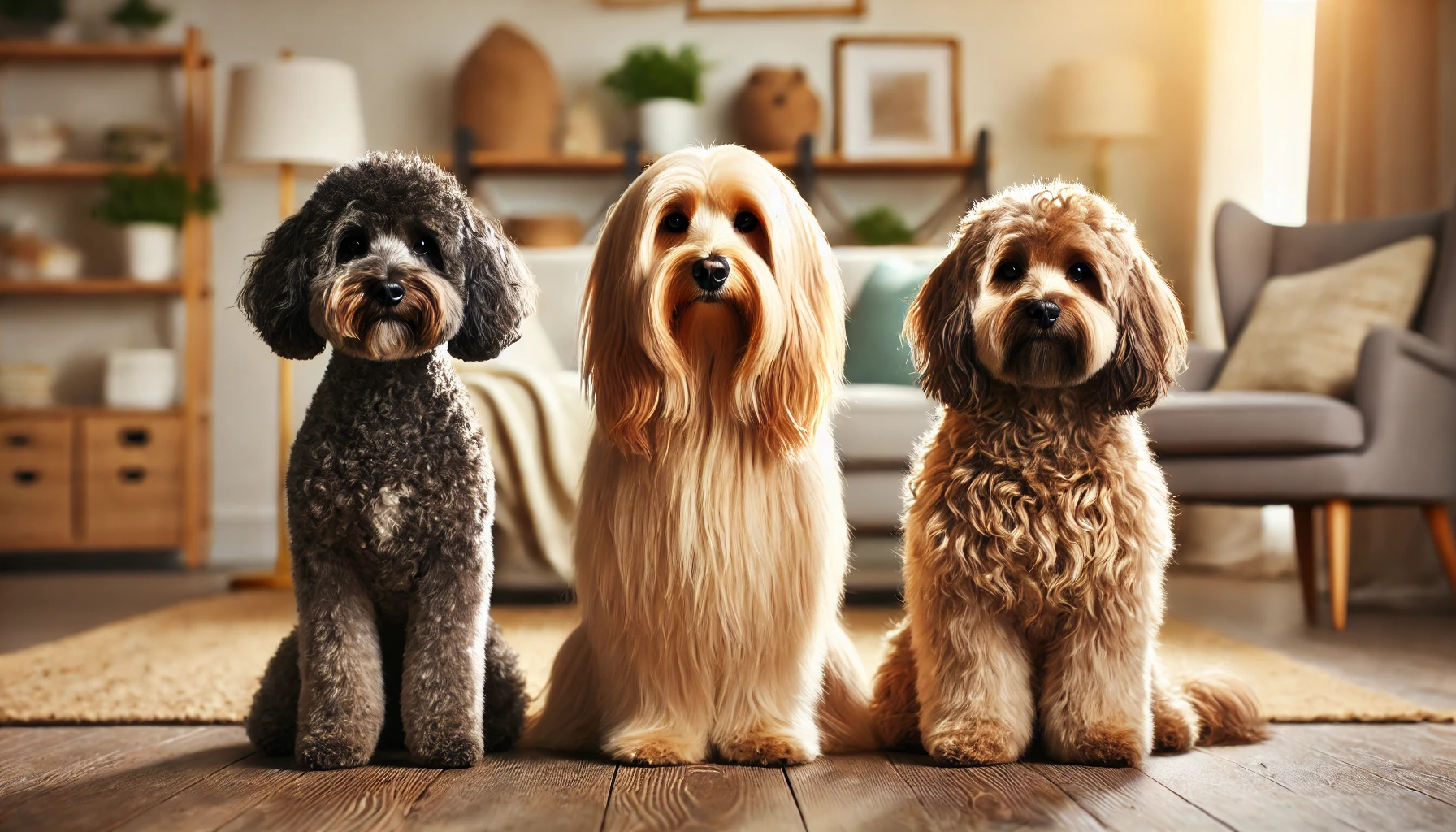
A critical step in effective dog grooming is recognizing the type of coat your dog has. Each type of coat demands a specific approach to brushing that ensures the health and appearance of the coat while making the process as efficient and comfortable as possible for your fur baby. Here are the main types of dog coats and important considerations for each:
Short-Coated Dogs
Short-coated dog breeds: Beagle, Boston Terrier, Labrador Retriever, French Bulldog, Pug
Brushing Needs: These coats require less frequent brushing due to their simplicity. A rubber grooming mitt or a bristle brush works best to remove loose hair and stimulate the skin.
Frequency: Weekly brushing is usually enough to keep their coat healthy.
Medium-Coated Dogs
Medium-coated dog breeds: Australian Shepherd, Border Collie, Cocker Spaniel, Pembroke Welsh Corgi
Brushing Needs: Medium coats may have slight waves or layers that require more attention to prevent tangles. A slicker brush or pin brush is ideal for penetrating the coat thoroughly and detangling.
Frequency: Brushing 2-3 times per week is recommended to maintain coat health and appearance.
Long-Coated Dogs
Long-coated dog breeds: Yorkshire Terrier, Shih Tzu, Afghan Hounds, Maltese
Brushing Needs: Long coats are prone to knots and matting. Use a combination of a slicker brush and a steel comb for thorough grooming. Detangling sprays can also be beneficial before brushing to ease the process.
Frequency: Daily brushing is often necessary to prevent mats and keep the coat smooth and clean.
Curly-Coated Dogs
Curly-coated dog breeds: Poodle, Bichon Frise.
Brushing Needs: Curly coats can quickly become matted. Regular use of a slicker brush and sometimes a comb is crucial to gently work through curls without causing discomfort.
Frequency: Daily brushing is essential, especially after baths to prevent the coat from matting as it dries.
Double-Coated Dogs
Double-coated dog breeds: Pomsky, German Shepherd, Pomeranian.
Brushing Needs: These coats have a dense undercoat and a longer topcoat that need to be maintained separately. An undercoat rake is perfect for the dense underlayer, while a slicker brush can manage the topcoat.
Frequency: During shedding seasons, daily brushing is beneficial; otherwise, 2-3 times per week will manage shedding and maintain coat health.
What are the Right Tools for Your Dog’s Coat?
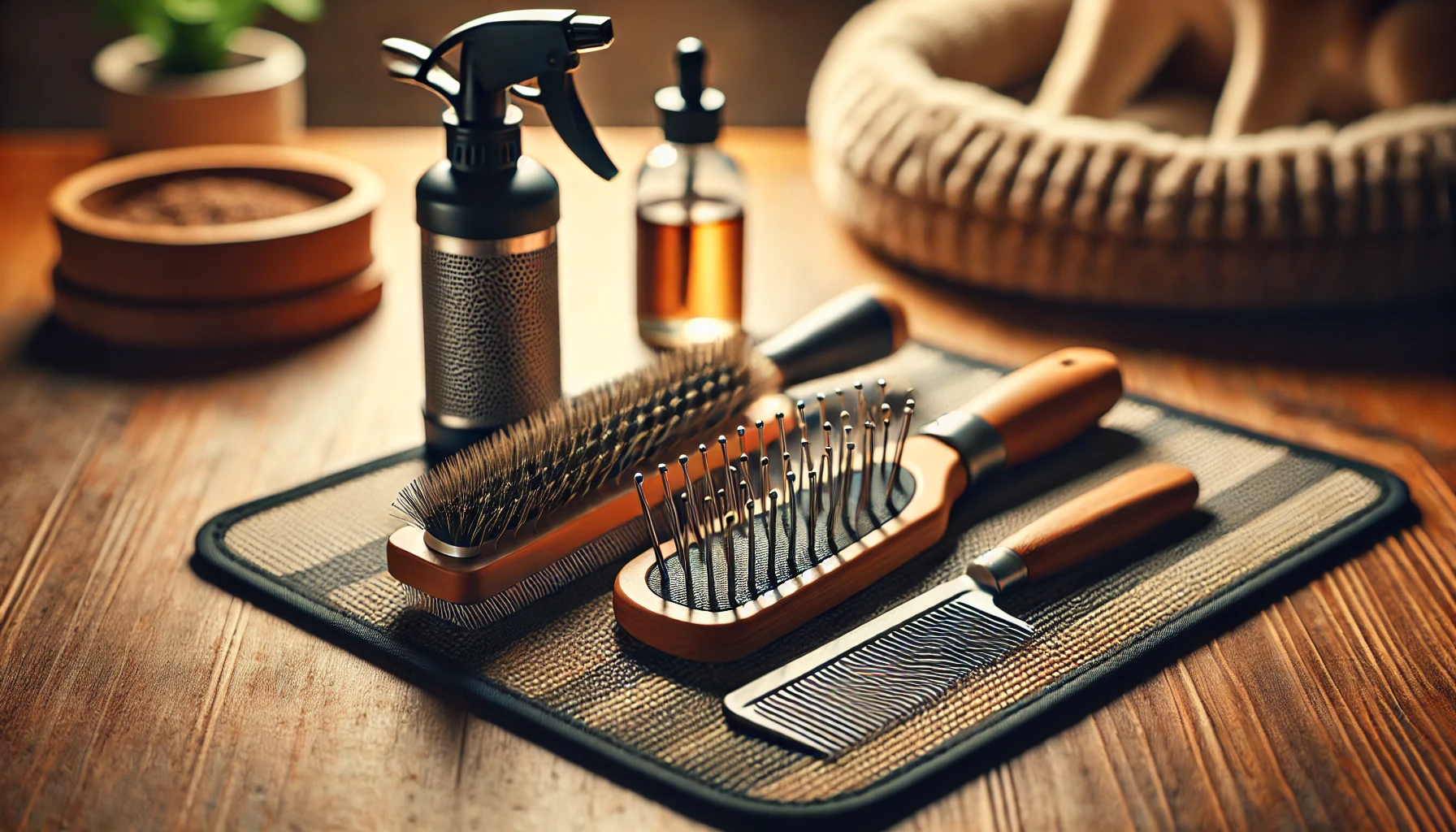
Choosing the correct tools for brushing your dog’s coat is essential for effective grooming. Here’s a guide to the main types of brushes and their best uses depending on your dog's coat type:
Bristle Brushes
- Best for: Short-haired and smooth-coated dogs.
- Benefits: Bristle brushes are great for removing loose hair and dirt while distributing natural oils throughout the coat, adding shine and smoothness.
Slicker Brushes
- Best for: Medium to long-haired dogs, or those with curly or woolly coats.
- Benefits: These brushes have fine, tightly spaced wires that can detangle and remove mats efficiently. They are perfect for smoothing the coat and removing undercoat fluff in shedding breeds.
Pin Brushes
- Best for: Dogs with longer, silkier coat types.
- Benefits: Pin brushes look similar to human hairbrushes and are gentle enough for delicate hair; they help detangle without pulling on the hair.
Undercoat Rakes
- Best for: Double-coated dogs.
- Benefits: Undercoat rakes are designed to get deep into thick and heavy coats to remove loose undercoat hair without damaging the topcoat. This is especially helpful during the shedding seasons to help manage the amount of loose fur.
De-shedding Tools
- Best for: Heavy shedders like Huskies, Labradors.
- Benefits: De-shedding tools can reduce shedding by removing loose fur from the undercoat before it has a chance to shed.
Rubber Grooming Gloves
- Best for: All types, but especially short-coated breeds.
- Benefits: Rubber gloves are excellent for sensitive areas or dogs who dislike brush strokes. They can be used to gently massage while pulling loose hairs from the coat.
Grooming Combs
- Best for: Long-coated and curly-coated dogs as a follow-up tool.
- Benefits: Fine-tooth combs are good for detail work around the face and feet, while wider-tooth combs can handle thicker areas like the body and legs.
Preparing to Brush Your Dog’s Coat
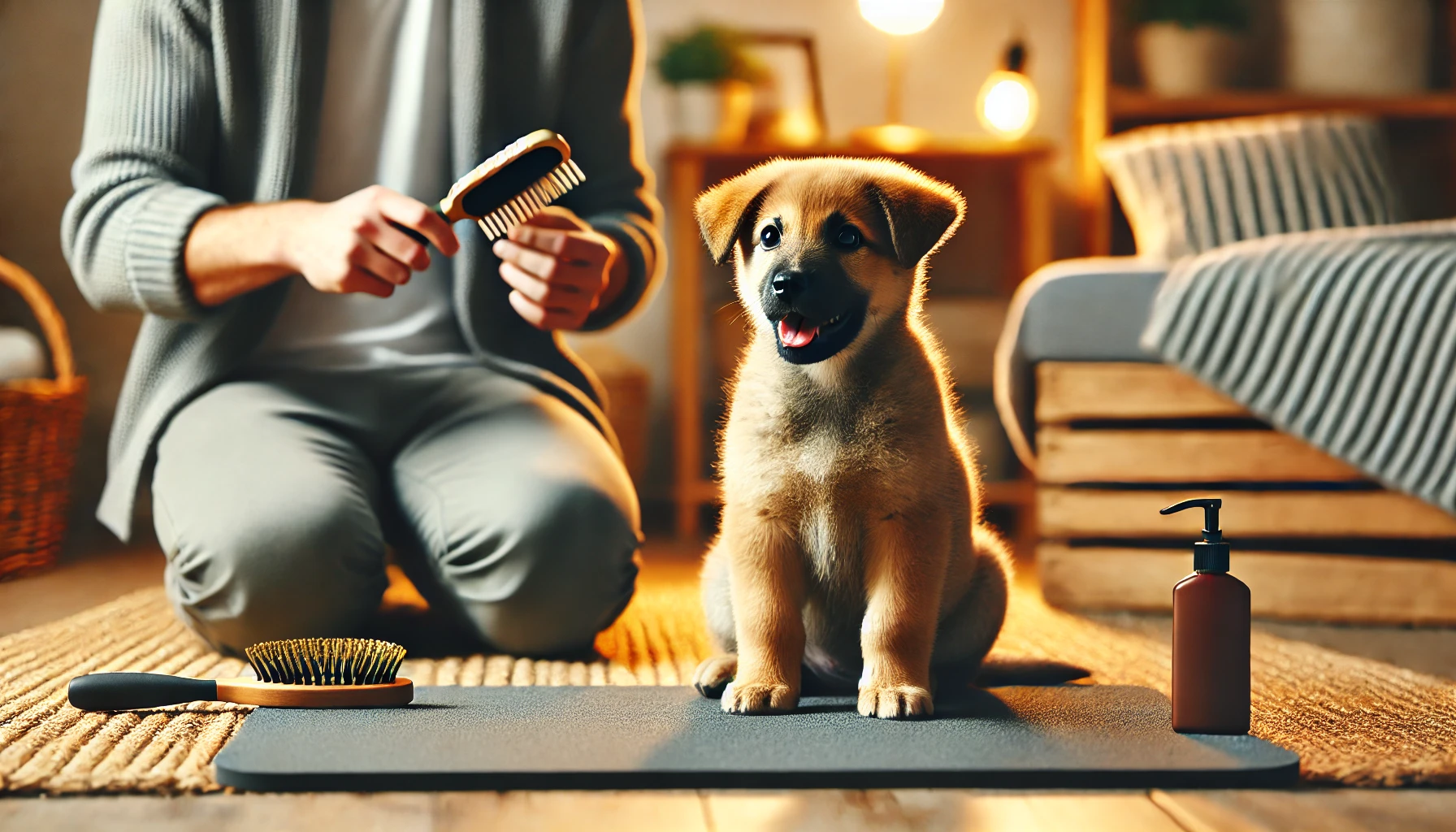
Creating a calm and welcoming grooming environment is essential to make the brushing session a positive and efficient experience for both you and your fluffy best friend. Here are key steps to prepare effectively:
Setting Up a Grooming Area
Choose a quiet corner of your home where your dog feels secure and relaxed, away from noisy household activity. It's important that this space has a non-slip surface to ensure safety during grooming. You might consider placing a rubber mat or a towel on the floor. Having all your grooming tools within reach but out of your dog's immediate sight can help prevent any nervousness associated with the tools.
Making Grooming a Positive Experience
Before you begin, spend a few minutes with your dog in the designated grooming area to help them get accustomed to the space. This can include some gentle petting or playtime that allows your dog to associate the area with positive feelings. Offering treats and using a soothing voice will help reinforce these positive associations. If your dog shows signs of stress, it’s beneficial to have short grooming sessions initially, gradually increasing the duration as they become more comfortable.
When to Brush Your Dog’s Coat
Timing is also crucial in preparing for a grooming session. Choose a time when your dog is more relaxed, like after a walk or meal when they are naturally more inclined to stay calm. Avoid brushing when your dog is overly excited or immediately after returning from an outing where they might still be full of energy.
How and When to Brush Your Dog’s Coat
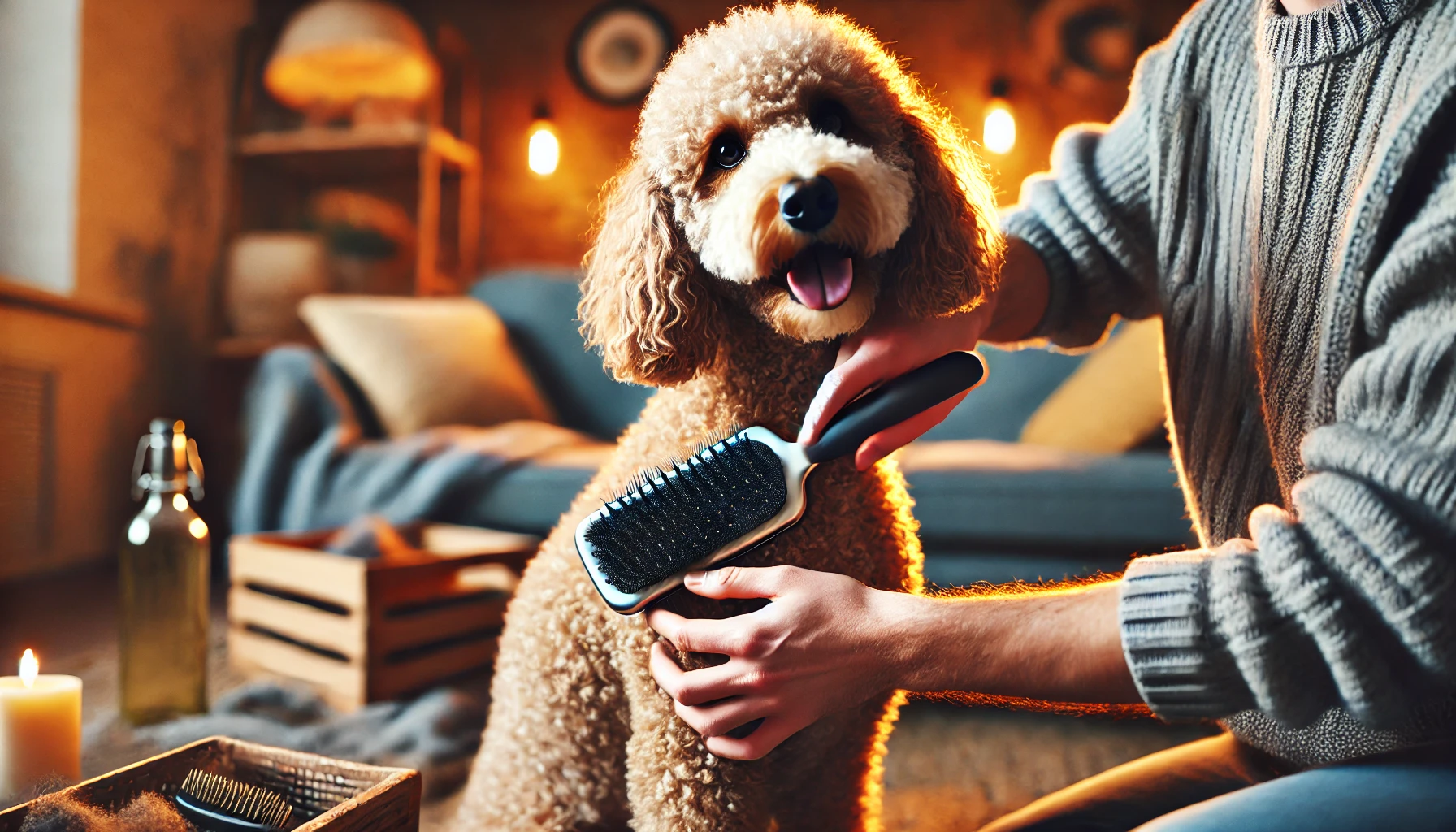
Here's a step-by-step guide on how to brush various types of dog coats:
Technique for Short-Coated Dogs
For dogs with short coats, use a rubber grooming mitt or a soft bristle brush. Start at the head and work your way down to the tail, following the direction of hair growth. Use gentle strokes to remove loose hair and dirt. This will stimulate the skin to produce natural oils that help keep the coat shiny and healthy. This type of coat generally requires less pressure and fewer brush strokes to maintain.
For dogs with short coats, brushing once a week is sufficient to remove loose hair and keep their skin healthy. This frequency helps manage shedding and keeps their coat shiny by distributing natural skin oils.
Technique for Medium-Coated Dogs
Medium-coated dogs benefit from the use of a slicker brush followed by a pin brush. Begin brushing in sections to ensure thorough coverage. Start from the legs and move upward to the body, always brushing in the direction of hair growth. Use the slicker brush to detangle and remove the dead undercoat, then follow up with the pin brush to smooth the hair and remove finer loose hair.
Medium-coated dogs often require more frequent brushing, about two to three times per week. This helps prevent tangles and mats, especially if your dog is active outdoors and more likely to pick up debris in their fur.
Technique for Long-Coated Dogs
Long-haired breeds require the most attention to prevent mats and tangles. Start by using a slicker brush to gently work through the coat. Begin at the tips of the hair and slowly work inward to the skin. If you encounter mats, use a detangling spray and a wide-tooth comb to gently tease them apart. Regular use of a conditioner or detangling spray can help keep the hair manageable between grooming sessions.
Long-coated breeds usually need daily brushing to prevent severe matting and tangling, which can be painful and can lead to skin infections. Daily brushing also helps manage shedding and keeps the coat looking smooth and clean.
Technique for Curly-Coated Dogs
Curly coats, such as those of Poodles or Bichon Frises, should be brushed with a slicker brush to prevent mats and keep curls tidy. Start close to the skin and brush outwards to fluff the curls and ensure you’re reaching all layers of the coat. Regular brushing is essential to prevent the dense curls from matting.
Like long-coated dogs, curly-coated breeds benefit from daily brushing. This prevents mats and keeps their curls well defined and neat. Regular brushing is crucial to maintain the health and appearance of their distinctive coats.
Technique for Double-Coated Dogs
For breeds with double coats, begin with an undercoat rake to remove loose undercoat, particularly during shedding seasons. Follow with a slicker brush to remove tangles and smooth out the topcoat. Brush in the direction of hair growth and pay extra attention to areas prone to knotting like behind the ears and under the legs.
During shedding seasons, usually in the spring and fall, double-coated dogs may need to be brushed daily to manage the large amounts of hair they shed. Outside of shedding season, brushing two to three times per week is enough to keep their coats healthy and free of mats.
Signs That Your Dog Needs Brushing
Aside from these general guidelines, it's important to watch for signs that your dog might need an extra brushing session:
- Increased Shedding: Visible tufts of fur sticking out or more hair accumulating on your flooring can indicate it’s time for a brush.
- Matting and Tangles: If you notice knots forming, especially in hidden areas like under the collar or behind the ears, it’s time to brush.
- Dirt Accumulation: After a day out hiking or playing, a good brush can help remove dirt and debris before it gets matted into the coat.
Brushing Mistakes to Avoid
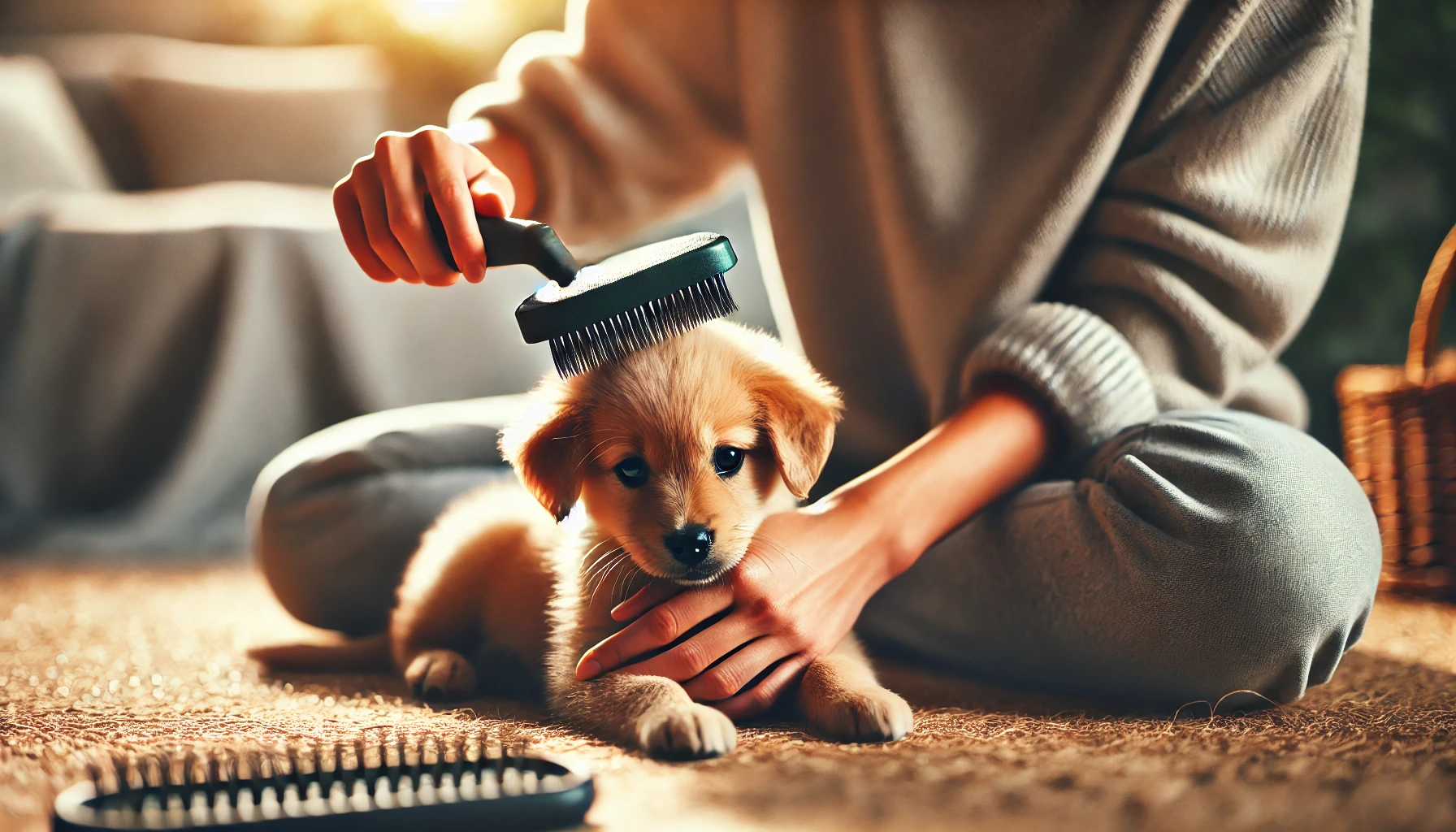
Brushing your dog’s coat seems straightforward, but a few common mistakes can make the process less effective or even uncomfortable for your pet.
- Over-Brushing
While regular brushing is vital, too much brushing can irritate your dog's skin, especially if you're using a hard-bristled brush. Pay attention to your dog's reaction during grooming sessions and adjust the frequency and tools as necessary to avoid skin irritation.
- Ignoring Sensitive Areas
Many dogs have sensitive areas, typically around the face, legs, and belly. Be gentle when brushing these spots. Using a softer brush or comb can help manage these areas without causing discomfort.
- Using the Wrong Tools
Selecting the right grooming tool is crucial based on your dog's coat type. Using the wrong type of brush can be ineffective or even painful. For instance, using a rake on a dog with a fine, silky coat could lead to skin damage, while a soft bristle brush might not penetrate a thick, double coat effectively.
- Rushing the Brushing Process
Trying to brush your dog’s coat hastily can result in pulling and tugging on tangles, leading to a painful experience. Take your time to gently work through knots and tangles and use detangling sprays if necessary to ease the process.
- Neglecting Regular Maintenance
Failing to brush your dog regularly can lead to the buildup of mats and tangles, which are painful and difficult to manage. This neglect can also lead to secondary skin infections under the mats. Regular brushing prevents these issues and keeps your dog comfortable.
- Not Checking for Fleas and Ticks
Each brushing session is an opportunity to check for fleas, ticks, and other skin issues. Skipping this check can lead to missed chances for early detection and treatment of infestations or skin conditions.
Final Thoughts
The key to successful dog grooming lies in consistency and patience. Regular brushing sessions using the correct tools and techniques can prevent common skin problems and improve your dog’s coat health dramatically.
Other Dog Care Articles That Might Interest You
How To Safely Clip Your Dog’s Nails
Puppy Training Guide for New Owners
How to Correct Unwanted Behavior in Dogs
The 8 Basic Commands in Dog Training
Scroll down to see FAQs about brushing a dog's coat at home.
What To Read Next
Puppy Training Guide for New Owners
Crate Training Guide
Frequently Asked Questions
How to brush a dog's hair? To properly brush your dog's hair, use the appropriate brush for their coat type and gently brush in the direction of hair growth. Start from the head, moving towards the tail and down the legs. For dogs with longer fur or curly coats, use a slicker brush and detangling sprays as needed to prevent mats and tangles.
Is it better to brush a dog's hair wet or dry? It is generally better to brush a dog's hair when it is dry. Wet hair can make existing tangles worse and is more susceptible to damage. However, for curly-coated dogs, slight dampening may help in reshaping the curls after brushing.
How often should you brush your dog's fur? The frequency of brushing depends on your dog’s coat type: Short-coated dogs: Once a week. Medium-coated dogs: Two to three times per week. Long-coated or curly-coated dogs: Daily to prevent tangles and mats. Double-coated dogs: Daily during shedding seasons; otherwise, two to three times per week.
Do you brush a dog with or against? Always brush with the direction of the hair growth to prevent discomfort and potential damage to the coat.
Should I brush my dog's face? Yes, you can brush your dog's face, particularly if they have a longer or fuller face coat. Use a smaller, softer brush to gently brush the fur and avoid sensitive areas like the eyes and ears.
Can you overbrush a dog? Yes, overbrushing can irritate and damage the skin, particularly if using a hard-bristled brush or brushing too frequently.
How to train a dog to like brushing? Gradually acclimate your dog to brushing by starting with short sessions, using lots of praise and treats, and creating a calm, positive environment. Start brushing when your dog is calm or tired, such as after a meal.
Should I brush my dog morning or night? You can brush your dog either in the morning or at night. Choose a time when your dog is generally relaxed and when you can consistently integrate brushing into your routine.



